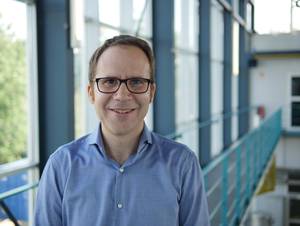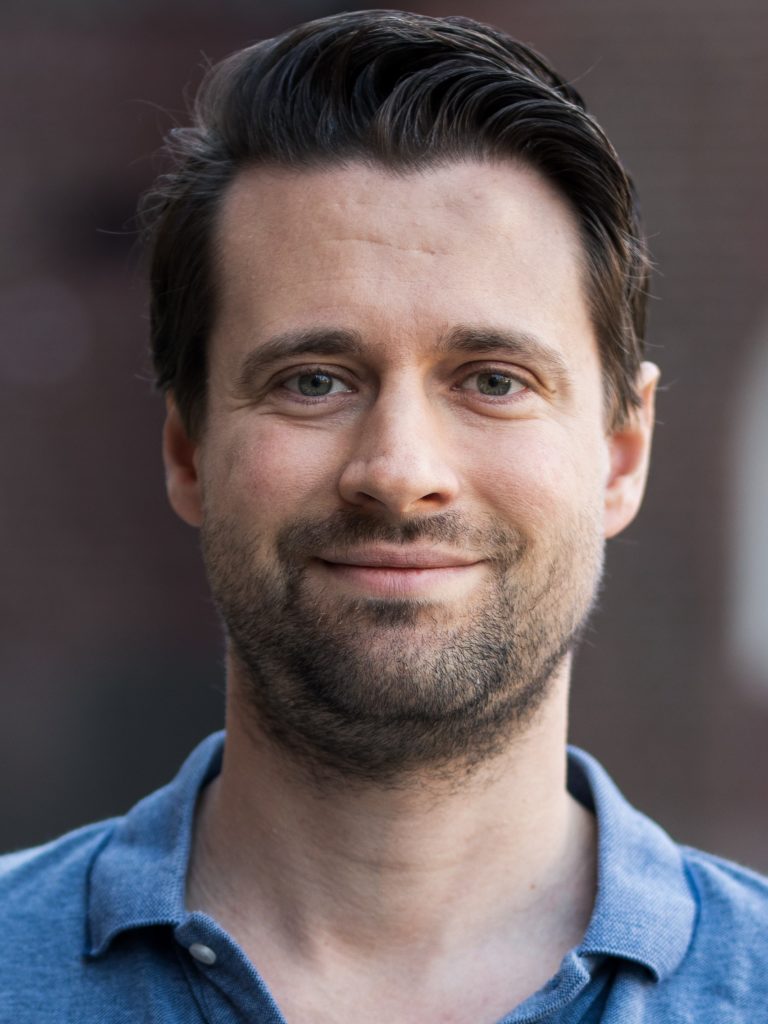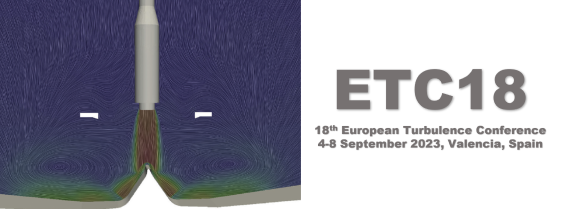Keynote Speakers

Marc Avila
Title: Drop breakup in turbulent flows
Abstract:
The breakup of drops and bubbles in turbulent fluids is a key mechanism in many environmental and engineering processes, including the emulsification of immiscible liquids, sprays, rainfall and the liquid-gas exchange at the ocean-atmosphere interface. Even in the well-studied dilute case, quantitative descriptions of drop fragmentation remain elusive, and many empirical models have been proposed to date. In this talk, I will show that in homogeneous isotropic turbulence, drop breakup is a memoryless process. The corresponding time constant increases exponentially as the Weber number decreases. As a consequence, dilute emulsions evolve through a continuous fragmentation process with exponentially increasing time scales. I’ll conclude the talk by demonstrating that breakup is caused by outer eddies capable of generating strain at the drop surface by virtue of the non-local coupling between vorticity and strain rate. Modelling approaches exploiting this finding will be discussed in the context of extreme (rare) events in turbulence, drawing an analogy to turbulence transition in pipe flow. The presented work has been done together with Alberto Vela Martín.
Biography:
Marc Avila studied Mathematics at the Universitat Autònoma de Barcelona and at the University of Glasgow and got his PhD in Applied Physics and Scientific Computing from the Universitat Politècnica de Catalunya in 2008. During his PhD, he was a research scholar at the Arizona State University and subsequently a postdoc at the Max-Planck-Institute for Dynamics and Self-Organization. Prior to becoming Professor of fluid mechanics at the University of Bremen, and Director of its Center of Applied Space Technology and Microgravity (ZARM), he was Professor at the University of Erlangen-Nuremberg. For his work on the transition to turbulence in pipe flow, he received the Euromech Young Scientist Award in 2009 and the Richard-von-Mises Prize of the GAMM in 2018. He enjoys applying dynamical-systems approaches to understand and predict the dynamics of transitional and turbulent flows, and more recently of multiphase flows.

Shervin Bagheri
Title: Functionality and stability of liquid-infused surfaces in shear flows
Abstract:
Robust surfaces that can resist fouling, reduce flow drag, and control heat and mass transfer in turbulent flows would have broad technological implications. In this talk, I will focus on how lubricant-infused surfaces (LIS) can be used to control turbulent transport processes. LIS are slippery surfaces that use microstructures to lock in place a lubricating liquid. Under gentle conditions, they have already demonstrated anti-fouling, drag reduction, and heat transfer enhancement. However, when submerged in turbulent flows, these surfaces drastically change their behavior. The lubricant-liquid interface can break up and partially drain, resulting in complex patterns. It can sustain large capillary waves, leading to surface roughness. It can also change or acquire new properties from Marangoni stresses, induced by surfactants or temperature variations. I will discuss how these phenomena originate from flow-induced instabilities of liquid-liquid interfaces and how they modify turbulent transport processes.”Biography:
Professor Bagheri’s research focuses on the interaction between flowing fluids and complex materials across different length and time scales, ranging from molecular aspects of triple-phase contact lines to turbulent flows over porous media. His main objective is to apply this understanding to control/sense flows and transport phenomenas. Shervin Bagheri received his PhD in Fluid Mechanics at Royal Institute of Technology (KTH) in Stockholm in 2010. In 2017, he was appointed as Wallenberg Academy Fellow and received the Future Research Leader award by Swedish Foundation for Strategic research (SSF). Since 2020, he is a member of the Young Academy of Sweden. In 2022, he received ERC Consolidator grant for studying lubricated surfaces in fluid flows.

Leonie Canet
Title: Functional renormalisation group approach to turbulence
Abstract:
The aim of this talk is to give an overview of the results which can be obtained on the statistical properties of turbulence using a specific implementation of the Renormalisation Group (RG) called Non-perturbative or Functional RG. I will focus on isotropic, homogeneous and stationary turbulence in incompressible flows, and also on passive scalar turbulence. I will first briefly introduce the FRG formalism to study the Navier-Stokes equation and turbulence, and describe the RG fixed-point corresponding to stationary turbulence with large-scale forcing. I will then show that the FRG allows one to obtain analytical results on the space-time dependence of generic multi-point correlation functions of the turbulent velocity in the limit of large wavenumbers. I will compare these predictions with available results from direct numerical simulations and experiments. I will finally discuss the FRG analysis of shell models of turbulence.
Biography:
Léonie Canet is a Professor at University Grenoble Alpes and she is also a member of the Institut Universitaire de France since 2019. She received her PhD in theoretical physics in 2004 in Paris, and her main area of research is statistical physics, in particular the theoretical study of classical non-equilibrium systems and non-equilibrium critical phenomena, and also open quantum systems and driven-dissipative Bose-Einstein condensates. She is an expert in functional and non-perturbative renormalisation group methods. She was awarded the Bronze medal of CNRS in 2018.

Massimo Cencini
Title: Microorganisms swimming in turbulence
Abstract:
Many aquatic microorganisms are motile from bacteria to several species of phytoplankton. The complex interplay between fluid transport, motility and shape of the microswimmers can give rise to non-trivial spatial organization and orientation dynamics for the microorganisms. I will review a few studies showing the richness of behavior and how simple mechanistic models for the microswimmers motility allow to account for several phenomena
Biography:
Massimo Cencini is senior researcher at the Institute of Complex Systems of the Italian National Research Council (CNR). He received his PhD in Physics from the University of Rome “La Sapienza” in 2000. He has been post-doc at the Max Planck Institute for Complex Systems in Dresden (Germany) and at the Observatory of the Cote d’Azur in Nice (France). The leading themes of his research activity are dynamical systems, statistical theories of turbulence and turbulent transport and, more recently, the study of the interplay between fluid transport and motility of microswimmers.

Soledad Le Clainche
Title: Modal decompositions and other machine learning tools in fluid dynamics
Abstract:
One of the biggest challenges our society faces is to combat climate change. To mitigate its effects, it is necessary to explore different alternatives and develop new technologies that are capable of reducing atmospheric pollution. Fluid mechanics is a science with multiple applications that can be used for this purpose, such as improving combustion system efficiency, studying ways to reduce air pollution in urban areas, and enhancing the design of aircraft and making them more efficient. To study these issues, reduced-order models (ROMs) based on physical principles are proposed, using (i) modal decompositions (singular value decomposition– SVD, higher-order dynamic mode decomposition – HODMD), and (ii) machine learning tools (neural networks) combined with these decompositions. This work applies these techniques to solve the aforementioned problems, while also presenting new strategies to develop efficient and accurate ROMs. Additionally, a novel method fully data-driven to identify the structural sensitivity in complex flows (fully non-linear) will be introduced. The method is based on HODMD, and new applications for flow control will be presented.
Biography:
Dr. Soledad Le Clainche is Professor of Applied Mathematics at the School of Aeronautics of the Universidad Politécnica de Madrid (UPM). In December 2013, she finished her Ph.D. at the same University, in the Dept. of Fluid Dynamics and Aerospace Propulsion. Her main lines of research focus on computational fluid dynamics, data analysis, machine learning, and the development and application of predictive reduced order models based on physical principles. In this line, she is the PI of several national and EU-funded projects whose main objective is to develop new strategies to reduce air pollution in cities, to develop more efficient combustion systems and aerodynamic designs, and to advance in the field of personalized medicine.

Maria Vittoria Salvetti
Title: Dynamics of separating and reattaching flows
Abstract:
Several flow configuration of interest for engineering and environmental applications are characterized by separating and reattaching flows. An example is the flow around elongated bluff bodies, which may be considered as simplified models for high-rise buildings or bridge sections. A typical scenario is the separation of shear-layers, which undergo to instability leading to the formation of vortical structures. These structures are convected downstream interacting each other and with the solid wall. The corresponding mean flow is characterized by a recirculation region ending by mean flow reattachment. Turbulence transition and turbulence superpose to this scenario. Experimental and numerical studies are reviewed herein, to provide insights on the dynamics of separating and reattaching flows and how it impacts on the whole flow features. Implications for numerical simulations and modeling are also highlighted.
Biography:
Maria Vittoria Salvetti is Full Professor of Fluid Dynamics at the Industrial and Civil Engineering Department of the University of Pisa. She is currently the Department Head.
She is coordinator of the Special Interest Group on “Large-Eddy Simulation” (SIG 1) and chairman of the Scientific Programme Committee of the European Research Community on Flow, Turbulence and Combustion. She is member of the EUROMECH Council, of the IUTAM Congress Committee and of the Scientific Committee of Italian Space Agency. She is associated editor of Computers and Fluids and of Flow, Turbulence and Combustion, editor of the ERCOFTAC Book Series (Springer) and member of the advisory board of Acta Mechanica; she has been and is currently member of the organizing and scientific committees of many international conferences (e.g., DLES, ETMM, FRONTUQ, TI series).
Her main research topics are: simulation and modeling, with special focus on Large-Eddy Simulation, of turbulent flows (bluff-body flows, particle-laden flows, wind turbines…), reduced-order models for fluid dynamics, flow instability, flow control, drag reduction, uncertainty quantification and stochastic sensitivity analysis in CFD, micro-fluidics, cardiovascular flows.
She is author of more than 160 scientific publications indexed in Scopus.

Ricardo Vinuesa
Title: Modeling and controlling turbulent flows through deep learning
Abstract:
The advent of new powerful deep neural networks (DNNs) has fostered their application in a wide range of research areas, including more recently in fluid mechanics. In this presentation, we will cover some of the fundamentals of deep learning applied to computational fluid dynamics (CFD). Furthermore, we explore the capabilities of DNNs to perform various predictions in turbulent flows: we will use convolutional neural networks (CNNs) for non-intrusive sensing, i.e. to predict the flow in a turbulent open channel based on quantities measured at the wall. We show that it is possible to obtain very good flow predictions, outperforming traditional linear models, and we showcase the potential of transfer learning between friction Reynolds numbers of 180 and 550. We also discuss other modelling methods based on autoencoders (AEs) and generative adversarial networks (GANs), and we present results of deep-reinforcement-learning-
Biography:
Dr. Ricardo Vinuesa is an Associate Professor at the Department of Engineering Mechanics, at KTH Royal Institute of Technology in Stockholm. He is also Vice Director of the KTH Digitalization Platform and Lead Faculty at the KTH Climate Action Centre. He studied Mechanical Engineering at the Polytechnic University of Valencia (Spain), and he received his PhD in Mechanical and Aerospace Engineering from the Illinois Institute of Technology in Chicago. His research combines numerical simulations and data-driven methods to understand and model complex wall-bounded turbulent flows, such as the boundary layers developing around wings and urban environments. Dr. Vinuesa has received, among others, an ERC Consolidator Grant, the Göran Gustafsson Award for Young Researchers and he is the PI of several EU-funded projects.

Paul Williams:
Title: Forecasting atmospheric turbulence from hours to decades ahead
Abstract:
It is well known that the atmosphere exhibits turbulence with a -5/3 energy spectrum on small scales (on the order of 100 km and smaller). It is also well known (especially to airline passengers) that transient localised enhancements to this background turbulence are hazardous to aircraft. Understanding this aviation-affecting subset of turbulence is an important and challenging application of fluid dynamics. This talk will describe a new theory and mechanism for the generation of aviation turbulence. It will also test the skill of the mechanism by comparing observations of turbulence with predictions made from the theory. These tests are successful, to the extent that the algorithm is now being used operationally to predict turbulence for the aviation sector every day. Finally, I will explain why climate change is strengthening aviation turbulence, potentially leading to bumpier flights in future.
Biography:
Paul Williams is Professor of Atmospheric Science at the University of Reading, UK. Educated in physics to PhD level at Oxford, he specialises in atmospheric turbulence, jet streams, numerical modelling, and climate change. Regarding the effects of turbulence on commercial aircraft, he has developed award-winning turbulence forecasting algorithms that are now used operationally, and he has pioneered research into the effects of climate change on turbulence. He is a Fellow of the Institute of Physics and the Royal Meteorological Society.
